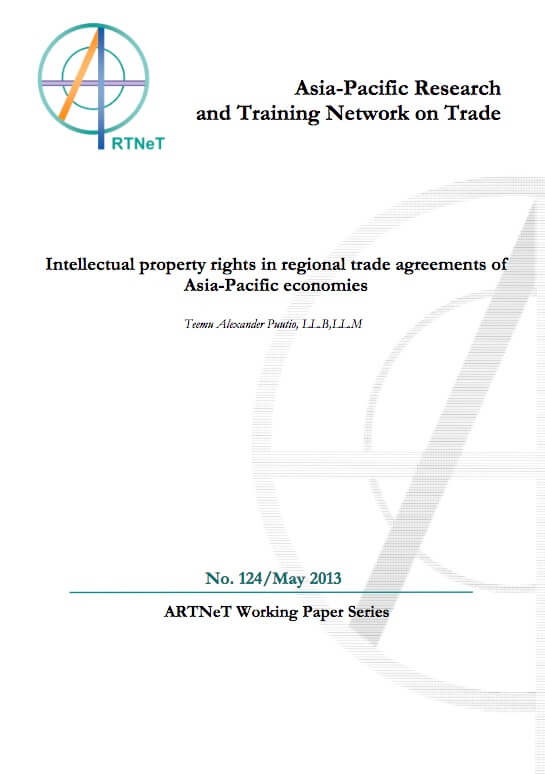Intellectual property rights in regional trade agreements of Asia-Pacific economies

Economic growth across the globe increasingly depends on knowledge-based industries. As a consequence Intellectual Property Rights, or IPRs, are becoming increasingly integral to trade agreements. With the stagnation of the Doha Round the prospect of new global standards, to augment those already agreed through TRIPS (the Agreement on Trade Related Aspects of Intellectual Property Rights administered by WTO) is diminishing. Therefore some countries are using bilateral and multilateral trade agreements to push for strengthened IPR standards which they hope will become the new de facto international standards. At the turn of the millennium there were less than 10 agreements containing IPRs in the AsiaPacific. At the end of April 2013, 51 trade agreements that include IPR provisions were in some stage of existence, according to Asia-Pacific Trade and Investment Agreements Database (APTIAD). The proliferation of IPRs within trade agreements has been notable and IPRs have become common subject matter for bilateral and multilateral treaties in the AsiaPacific. Not all agreements give IPRs equal treatment however. In fact, as our research shows, the extent to which IPRs are included varies greatly from agreement to agreement. For example, the agreement between Japan and Switzerland is more than 10 times more significant in terms of IPRs than the agreement between New Zealand and Thailand according to our grading methodology. Using the measure of impact explained in more detail in the paper it is possible to show that developed countries, Australia and the United States as well as the European Union show a persistent pattern of being involved only in high-impact agreements in terms of IPRs. The grading also shows that developing countries do not seek the inclusion of high-impact IPR standards in trade agreements when negotiating with another developing country. This finding validates the notion that the pressure for including IPRs in trade agreements originates from developed countries. What does the emergence of IPRs in trade agreements entail for Asia-Pacific developing countries? As the capacity to deal with IPRs is distributed unequally, the emergence of IPRs has lead to a situation where a handful of developed countries are all but unilaterally ratcheting up the IPR standards one trade agreement at a time. Developing countries have largely consented in exchange for trade normalization or increased market access. There is extensive evidence that the economic effects of IPRs vary greatly, depending on the environment in which they are applied. But in the case of developing countries, it appears that the current globally upheld level of IPRs might not be the optimal solution for supporting their growth and that IPRs protection is not a significant factor for the economic growth of developing countries (World Bank, 2002). The number of IPRs-inclusive trade agreements appears certain to continue to grow and the scope and significance of IPR provisions will increase further in the coming years. Introducing higher IPR protection standards can have long-lasting and unexpected consequences for the developing countries of Asia-Pacific. For such countries, committing to higher IPR standards in return for trade normalization or increased market access carries risks which should not be ignored.
